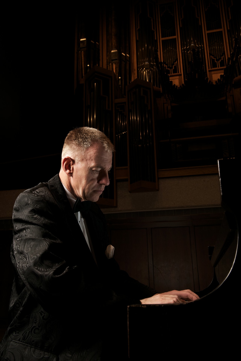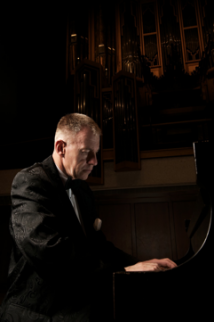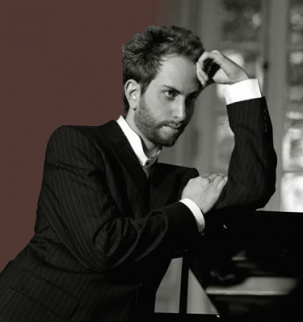It hasn’t been the same hub over the past several years. As Andrew Matson of the Seattle Times wrote in 2010, “I put it together that the poor attendance wasn’t a fluke. I’d visited other area teen centers (Ground Zero in Bellevue, KTUB in Kirkland) around the same time and realized that Eastside kids in the late-aughts didn’t want to be in bands like kids in the ’90s did. They wanted to play Halo. They wanted a living room or a cafe, not a nightclub.”
I wanted to explore the various music scenes just outside of Seattle. The first person I reached out to was singer-songwriter Whitney Ballen. She works for the Old Fire House in Redmond, and has a history with the venue that began when she was a young teenager. She played her first show there when she was 15.
Not coincidentally, Ballen is set to release her newest album, an excellent collection of songs based on growing up near Fall City, Washington. The album is called Falls. (Full disclosure: I was one of its Kickstarter backers.) Starting this weekend, she’s beginning a tour around DIY spaces and smaller venues.
We met at a Redmond donut shop to talk about the city and its music scene.
Can we talk a little bit about how you became involved with the Redmond Fire House and Redmond’s music scene?
Sure. One of my family’s friends, their son, was playing a show at the Fire House and they had rented it out. They covered songs like “Sweet Home Alabama.” I think I was 14 then. I went down to the show and some of the people working there looked cool and I thought it was a cool place. The person I went to the show with wasn’t into it, so I didn’t think I would go back. But I ended up going back by myself on a Friday to see a show and the band was playing on the floor and there was a bunch of people moshing. That was so cool! I was raised in Redmond, which is super suburb-y, but here were all these people I had never seen before, and it was all ages. So not like the average junior high student. That attracted me and I started going there more often. I became friends with people that went, and closer with some of the staff members. I started volunteering more and more.
The staff members were in bands, so we talked about that. I don’t remember when but I also started playing guitar. A staff member said I should play a show and I said, “Well, I did write some songs.” In 9th grade, I had my first show at the Fire House. I was opening for some punk band, which didn’t make any sense at the time. It was a super-full, which was weird and shocking. It was a lot of fun. I wanted to keep doing this. I played shows a lot.
I also found out about the Kirkland Teen Center and went to shows there. My friends who worked at the Fire House had friends who worked at Ground Zero in Bellevue, which was another teen center. I rotated around the teen centers, playing and going to shows. I met a lot of people that were my age or staff. I would see the staff play in bands, and sometimes see them play in Seattle. A lot of the time, those shows were in someone’s basement or some DIY space. I really liked the atmosphere.
The Firehouse and Ground Zero were very different from the Kirkland Teen Center because the Kirkland Teen Center was new and clean and really great gear, and a professional stage and lights. I liked the charm of the Firehouse and Ground Zero because Ground Zero was in an old two bedroom house and the Fire House was this old, gritty firehouse. You didn’t necessarily want to sit on the couches because you didn’t know what happened there. (laughs)
Plus, the walls are surrounded with posters of all of the bands that have played there, and it’s like “woah!” I had a lot of respect for it. Kate Becker had started the Fire House, who went on to start the Vera Project with a woman named Shannon (Stewart, and James Keblas), the original Vera Project in downtown Seattle.
I just continued to play. Once I got into high school, I started booking shows at the Fire House. They had a series called 4 Alarm, and I started booking those shows. I was also into art, so I would put on multi-media showcases. One was in the showroom at the Fire House. One was in the showroom of the Fire House. I wanted to create a massive bedroom fort in the middle of it. I was releasing a cassette at the time, and I had gotten my favorite local performers to play, so we played inside the bedroom fort. We had projections on the outside, and my favorite local artists showed their work. I really liked doing it, so I continued to doing things like that.
I work at the Fire House now, which is funny. I’m programming there now. Not so much events but programs and daily activities that revolve around music and art. It’s a lot of fun. The Redmond scene was really popular at one point. The Fire House started in 1992 by Kate Becker. She’s a really big inspiration. It was a hangout. Are you familiar with the bands that had played there?
Oh yes, definitely. You’ve been sharing posters from the Fire House on Facebook a lot lately (like the photo above). Botch, The Blood Brothers…
Botch, The Blood Brothers, Pretty Girls Make Graves, Jawbreaker, Damien Jurado, Unwound, Death Cab for Cutie got started there. Waxwing, Rocky Votolato spent a lot of time there. The Gossip, Smoosh, Modest Mouse played there. So many bands were there. I wasn’t around in the 1990s to attend a show, obviously, but I know that the scene was very, very different than it is now.
I think the Fire House got a bad rap for a while because it wasn’t a teen center necessarily. It was really limited because they were just doing shows on the weekends. A lot of people have a stigma about the Fire House that it was a place for teens to come and do drugs. Inside, that was never the case. In the early 2000s, the city took over the Fire House. It was a Boys and Girls Club before that, but the city took it over and wanted to make it a place for youths to come and hang out and feel safe.
There’s been about 4-5 good generations of music that has been coming out since I started going there. When I started going, it was like post-Modest Mouse type stuff. People playing in bands then who were really awesome are like 35 now. There were so many bands, but they were projects of people in other bands, so they were always changing names. It was a really big DIY scene.
I really liked the shows that were non-traditional, like when bands played on the floor instead of on the stage, or tried to make it feel more at-home, or utilizing the couch room in the back and make it feel like it was okay to dance and sweat because you weren’t in your living room.
I think that once bands graduated from playing at the Fire House, they started to play more shows in basements or art spaces. One was called the Greenhouse. There was Healthy Times Fun Club on Capitol Hill in Seattle. It got shut down. Black Lodge, then it was Holy Mountain. Full Tilt Ice Cream in White Center used to have shows. That’s where all of the bands I would see in Redmond would go. Then they’d start playing shows with people in Vancouver or Portland. That’s when I became more familiar with regional, cool bands.
Did the city taking over the Fire House have anything to do with a lot of bands migrating to Seattle or other spaces?
I don’t think so. At the time, the bands that were frequenting the teen centers were turning 19 or graduating high school and weren’t playing in those spaces any longer. The city still chose bookers, and that continues to this day. The bookers were usually people in bands and they were really well connected. It depends on who the booker was, but that tends to change the scene for the venue. We had Meli (Darby), who was really into hip hop, and that opened up a whole new scene for people that were into hip hop. That was kind of cool.
When the city took over, they just paid for the space and wanted to save it because it’s been there for a long time and wanted to have a place for teens, but over time wanted to have a way to have it appeal to the community, more so than just grungy teenagers. In the past five years, it has gone downhill music-wise. For example, when I started going when I was a teenager, there were older bands that were big in high school. My generation started being inspired by that generation and that kept going until somehow it just ran out. There’s the generation after me, they were the last really cool kids playing cool music and carrying that through to Seattle. After that, I don’t know what teens are doing. It’s a constant thought for me at work. Where do the teens go to listen to good music? It’s not at the Fire House. There are still kids playing music, but not enough to fill up an entire bill at the Fire House.
A lot of the kids who come into the Fire House now are really into school, so we’re trying to figure out how to adapt to that. For the staff, it’s unusual because we’re used to making patches on weekends, not wanting to study science. It is so unlike the stereotypical Fire House kid from the 1990s or 2000s. I don’t know if they’re listening to music online and don’t feel the need to go see live music.
Is there something that can be done to get people to come back?
When I started working at the Fire House, I thought, “Yes! I can try to get people from Seattle to play the Fire House.” On weekends, they don’t have programming, just shows. It’s such a nostalgic place that it deserves to have notable people playing and people coming to Redmond to see them play.
I think a few things could happen. First, letting people know it’s there and not just a teen center. We’re working on marketing it as the Old Fire House, not the Old Fire House Teen Center. That’s what it used to be. I think people are mistaken about it. We have insane gear and an insane sound system because it was all put into place by Bear Creek Studios. It’s a really awesome space.
We just got new bookers and they’re trying to get more regionally-known bands and have teen bands open for them. There was a good six years where that didn’t happen and the focus was only on bands from Redmond. That’s where a lot of the audience got lost, I think. My dream for the past decade (not quite, I’m not that old) would be to have a reunion show at the Fire House. Waxwing reunited last year or the year before that and played at the Vera Project. I just know people would love to play there again. I think it could be such a big draw. Things like that could happen, or a series of reunion shows. It could give teens a chance to come out and give them an inspiration to continue playing music.
{Whitney Ballen’s next show is on Saturday, March 22 at Heartland.}


